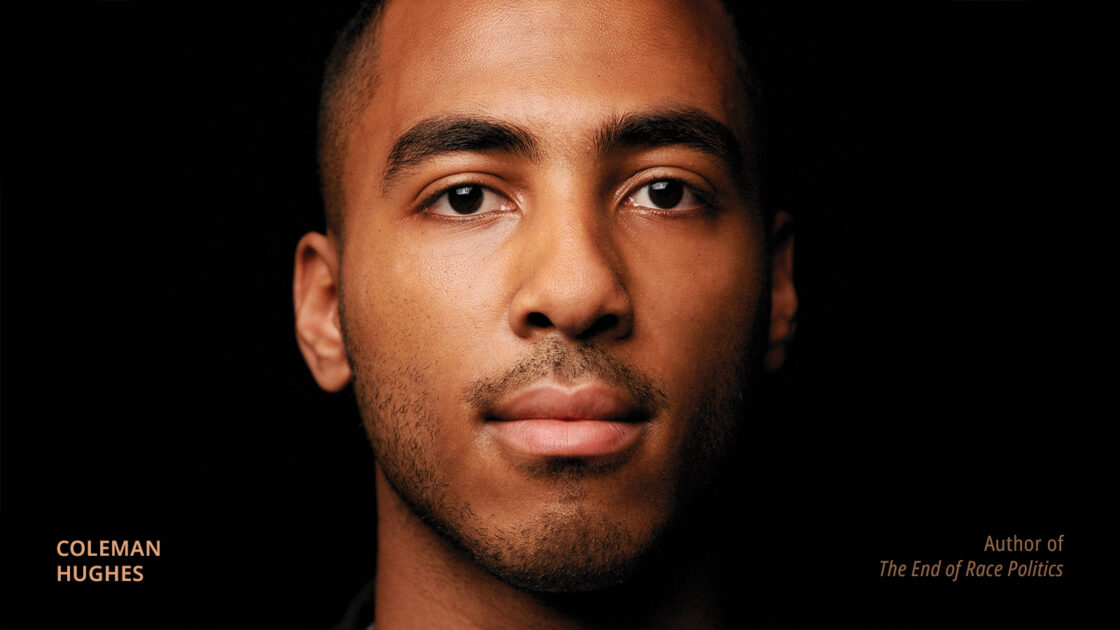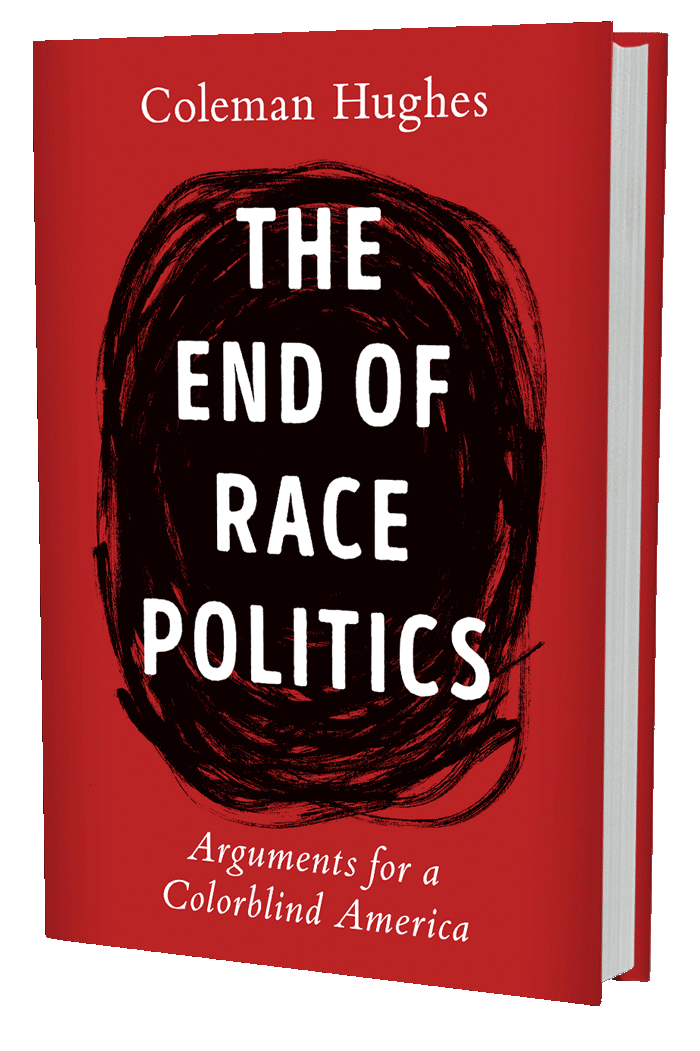Several years ago, I came across an imaginative essay entitled “Explaining Affirmative Action to a Martian.”1 The author, who I had never heard of, described a fictious interaction where a human explains the rationale of affirmative action to an alien. Among its gems is the following interaction:
Earthling: Black people were enslaved and subjugated for centuries, so, sometimes they get special dispensations. It’s only fair…
Visitor: So those black kids…were enslaved and subjugated, so they get to score 450 [standardized test] points lower than Asians?
Earthling: Well these particular black students didn’t experience slavery or Jim Crow themselves… But their grandparents might have experienced Jim Crow.
Visitor: Might have?
Earthling: Well, around half of black students at elite colleges are actually the children of black immigrants so they have no ancestral connection to American slavery or Jim Crow…
Visitor: … I’m utterly confused by you creatures.
The author of this essay was Coleman Hughes, a Columbia University undergraduate at the time. In the intervening years, Hughes has been one of the leading voices on race. As a long-time listener and fan of Hughes, I was eager to read his first book, The End of Race Politics: Arguments for a Colorblind America. It did not disappoint.
Hughes has a gift for clearly and dispassionately evaluating one of our most explosive social topics. Oftentimes in today’s world, the political left exaggerates the prevalence of racism while the political right a priori assumes that all such accusations lack merit. What we so desperately need is a middle ground: An analysis that deals honestly with the racism which does exist without inflating it. This is what Coleman Hughes does.
What makes his book excellent is, ironically, the mundane manner in which he evaluates race. Hughes carefully dissects the arguments of neoracism, an ideology he defines as “discrimination in favor of non-whites…justified on account of the hardships they endure—and hardships their ancestors endured—at the hands of whites.” Reading Hughes is a breath of fresh air. He gives neoracism the long overdue hearing it deserves, one that is fair but critical.
Hughes forces readers to think in terms of counterfactuals. This is typically missing from public discourse but is essential for evaluating double-standards and identifying what philosophers call the “special pleading” fallacy where rules are inconsistently applied. For example, the author points out that Yale University did not denounce the racism of a psychiatrist who gave a talk saying, “I had fantasies of unloading a revolver into the head of any white person that got in my way, burying their body and wiping my bloody hands as I walked away relatively guiltless.” Yet, as Hughes puts it, “Suppose [the speaker] had described fantasies about shooting black people in the head, burying them, and walking away… Is there any doubt that the Yale administration would have condemned her racism?”
In chapter five, Hughes delves into seven central tenants of neoracism, such as “Racial disparities provide direct evidence of systemic racism” and “White people have power in society, but Black people don’t.” Reading the book, and this chapter in particular, felt like following the author on a tour of three-legged stools. Each claim seems believable on its face but Hughes raises compelling arguments against them. For instance, consider the racial disparity tenant mentioned above which includes the claim that “there would be no racial disparities, or at least large ones, in a fair society.” It is easy to see the appeal: Blacks have been historically discriminated against and are on the short end of many troubling disparities. However, Hughes discusses factors other than racism that could explain group differences. Perhaps most critical is the age gap, such that the median White person is 10 years older than the median Black person. Wilfred Reilly points out that the age gap is even more striking (31 years) when comparing the modal (most common) age.2 Might that play a role in some disparities, such as wealth or incarceration rates?
One of the joys of reading Hughes’ book, at least for myself as a research psychologist, is the way key psychological concepts are infused throughout—even if not explicitly named (and since the author has no formal background this is not surprising). The notion of tribalism, something my colleagues and I have studied in the context of politics,3 is depicted as key to the neoracist ideology “because it casts every event as an instance of us versus them, good versus evil, black versus white.” Sadly, one of the most important lessons4 from social psychology—the subfield largely devoted to understanding how humans interact with each other—of the past 50 years is the ease with which people separate into groups and develop preference for in-group members.
Elsewhere, in critiquing what he calls “chronic victimhood,” Hughes writes, “A wise therapist wouldn’t tell you to accept chronic victim status…and think of yourself as forever trapped in your experience of trauma. The wise therapist would instead help you develop strategies for moving past the trauma you’d suffered, empowering you to escape the trauma’s gravitational pull.” Here, the author is getting at the idea of mindset, a concept developed by Stanford Psychology Professor Carol Dweck. Hughes is correctly pointing out that victimhood and its downstream difficulties should be viewed in the context of a growth mindset—something that is malleable—rather than in the context of a fixed mindset, which is not changeable. Growth mindsets suggest that people have agency to change; unsurprisingly, research generally supports the idea that it leads to better outcomes. A study by Jessica Schleider, for example, found that a single 20–30 minute computer-based session focused on enhancing a growth mindset reduced depression among adolescents when evaluated nine months later.5
There was one observation Hughes made in passing that clearly reveals his status as a gifted intellectual with a keen eye towards understanding how people think and behave. He starts by critiquing the position that America has failed to “acknowledge and atone for its past [racism]” by pointing out several facts which seem to contradict this assertion, including the adoption of Juneteenth and Martin Luther King Day as federal holidays, affirmative action programs, and most critically, Congress issuing apologies for slavery. Hughes argues that “none of this paints a picture of a general public, or a government, that is resistant to historical soul-searching.” Several paragraphs later he continues, “To this day, it remains a talking point among media pundits that America has ‘never’ issued a formal apology for slavery.” And this is where he makes his insight:
We must realize that a game is being played here. Normally when someone demands an apology, they actually want one. But sometimes they don’t. Sometimes the ability to continue demanding the apology is worth more than the apology itself. Sometimes the debt is worth more unpaid than paid… This is why every new apology, program, or holiday that they demand is forgotten as soon as it’s achieved… It’s not clear to me whether neoracists play this game consciously or whether there is self-deception involved. But either way, we are indeed playing a game, and if we don’t realize it, then everyone loses.
If you took out the word “neoracist” and told me this passage was from Eric Berne’s seminal 1964 book, Games People Play, I would have believed you. Hughes is arguing that a game of shifting goalposts is occurring. One could argue another instance of this happened in the aftermath of George Floyd’s death. First, there were demands for Chauvin to be convicted. After he was convicted, the guilty verdict was seen as insufficient. For instance, Bernie Sanders tweeted the common sentiment “The jury’s verdict delivers accountability for Derek Chauvin, but not justice for George Floyd.”6 If no game were occurring, which is to say that opinion was also held before the conviction, then it seems to suggest courts are unable to administer justice for victims. This raises challenging questions about how justice would be administered (if possible) and who would decide what constitutes justice.
My only substantiative critique of the book is that, while it functions as a highly effective counter to ideas presented by radical neoracists, Hughes could have bolstered his argument in favor of colorblindness by also speaking more explicitly to moderates. I think many left-of-center people are put off by the ideas of activists such as Ibram X. Kendi and Robin DiAngelo, and are disturbed by the way race is discussed in elite circles. However, I also think most would still favor mild affirmative action programs that they believe are appropriately calibrated. People who fall into this camp might agree with 90 percent of the book and even agree that colorblindness is a better approach to race than our current one. Yet, they might also argue that the best solution is to reduce, yet not eliminate, the consideration of race.
Overall, I found The End of Race Politics to be an excellent read from a superb up-and-coming author. Those teaching classes on race who include Kendi’s How to Be an Antiracist on their syllabus should seriously consider adding this book to the reading list for a diversity of viewpoints. Students could then engage with scholars who hold diametrically opposing positions and debate the merits of each.
I doubt that will happen anytime soon, but will be delighted if proven wrong. ![]()
A review of The End of Race Politics: Arguments for a Colorblind America by Coleman Hughes
About the Author
Michael H. Bernstein is an experimental psychologist and an Assistant Professor at Brown University. His research is focused on the overlap of cognitive science with medicine. He is Director of the Brown Medical Expectations Lab and co-editor of The Nocebo Effect: When Words Make You Sick. For more information, visit michaelhbernstein.com.
References
This article was published on March 30, 2024.
















